Everything for scrapbooking: what tools and materials are needed?
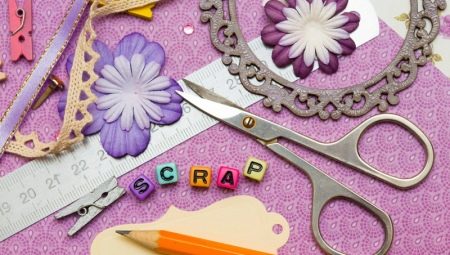
Scrapbooking is a unique handicraft, characterized by a wide range of selection of consumables, decor and design techniques for albums, booklets, calendars, and so on. Newbies to scrapbooking are limited to different types of paper, scissors, glue sticks, and embellishments. Professional craftsmen are armed with special stamps, eyelets; independently make decorated paper, envelopes and other materials necessary for needlework.
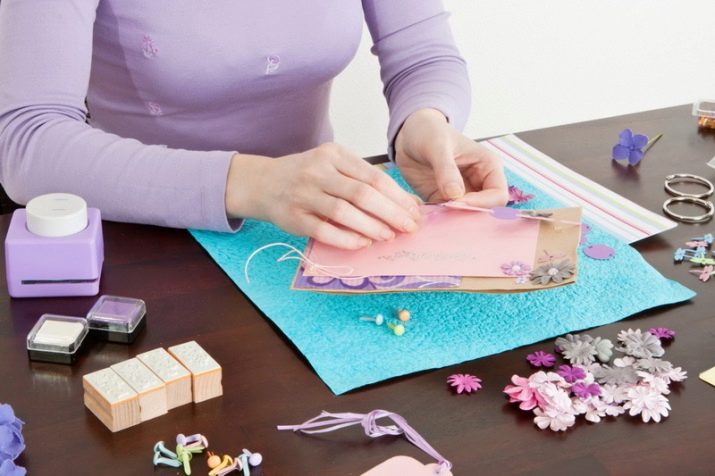
Basic tools
For a start, it is worth purchasing the necessary tools and materials.
List of main subjects.
- Paper is the main consumable. Differs in density, size, decor. Background paper - plain, is a substrate, design paper - sheets with a variety of patterns, patterns and color combinations.
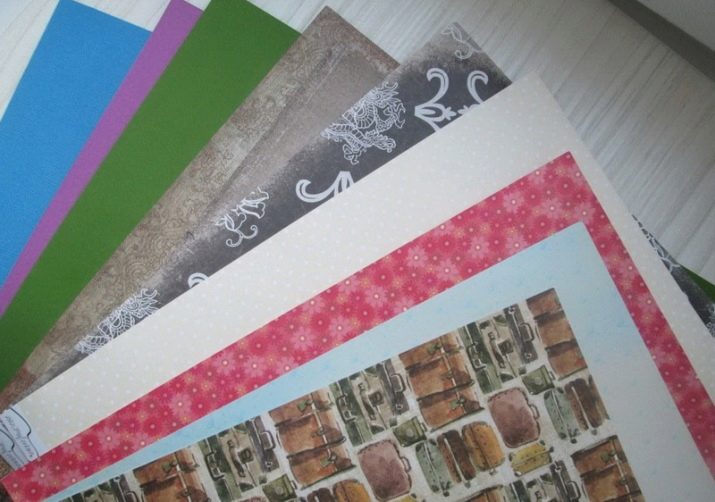
- Creasing board - serves for marking paper or other materials with subsequent bending of the sheet. The two sides of the board are marked with incisions in the form of a centimeter tape. It is used to create boxes, envelopes.
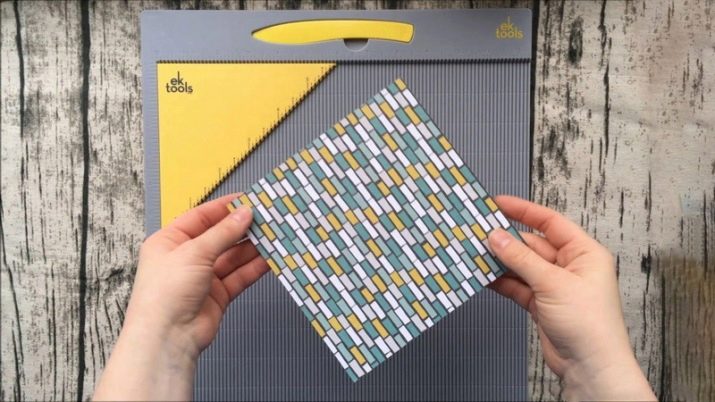
- Self-healing rug. Helps maintain the sharpness of cutting tools. The special material from which the rug is made does not leave marks on itself after cutters, knives. Protects your work surface from scratches.
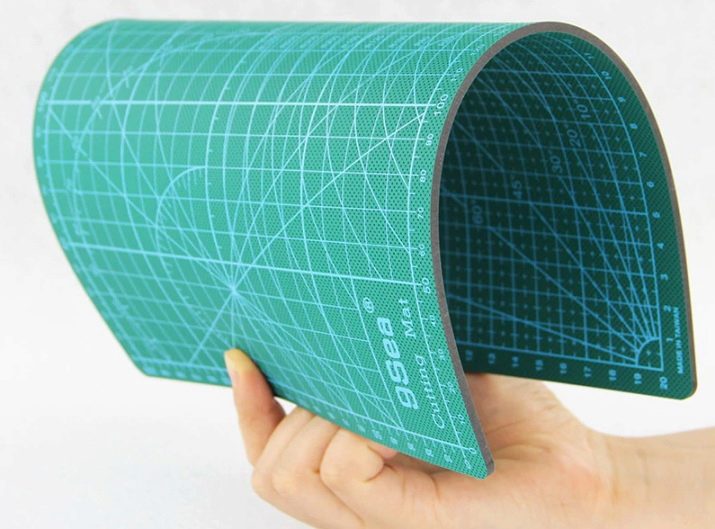
- Cutter or utility knife. It is recommended to purchase everything for construction in stores. The knife blades are fragile, easily break off, the professional tool has an improved quality of the working blade, which will allow you to use the knife for a long time.
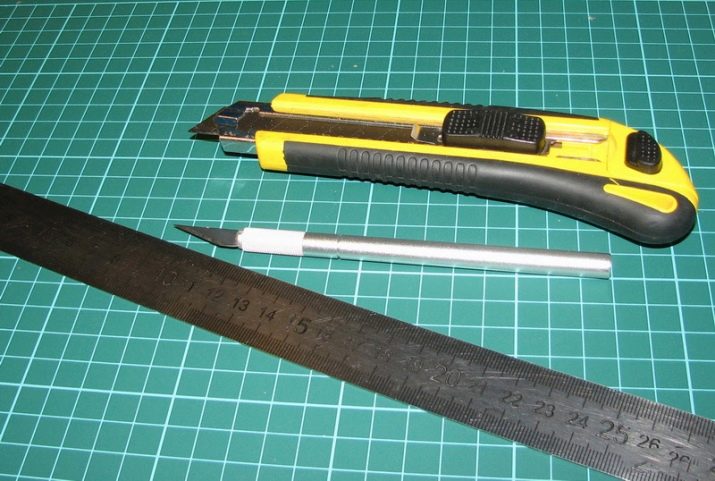
- Scissors. They help to cut blanks, give products a curly edge. An irreplaceable tool.The scissors are divided into straight lines - a blade with a straight cutting edge; curved - nail scissors with curved edges, used to decorate rounded parts of the material, hard-to-reach places; curly - the cutting edge of the scissors has a zigzag, wavy and other shape, they are used to create a decorative edge of paper, design frames, and so on.
There are also scissors, called mock-up scissors - they have a dense rigid working canvas, they are used to cut cardboard.
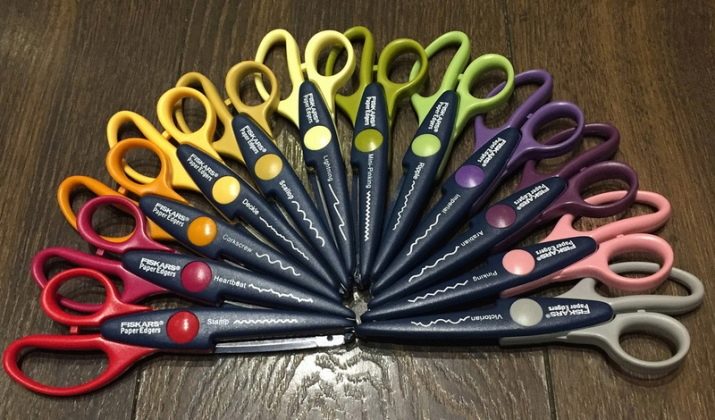
- Ruler... Required for marking parts. It is advisable to purchase a metal copy: falling on the edge of the ruler, the cutter blade will not spoil the material and the ruler itself, accordingly, will not be blunt.
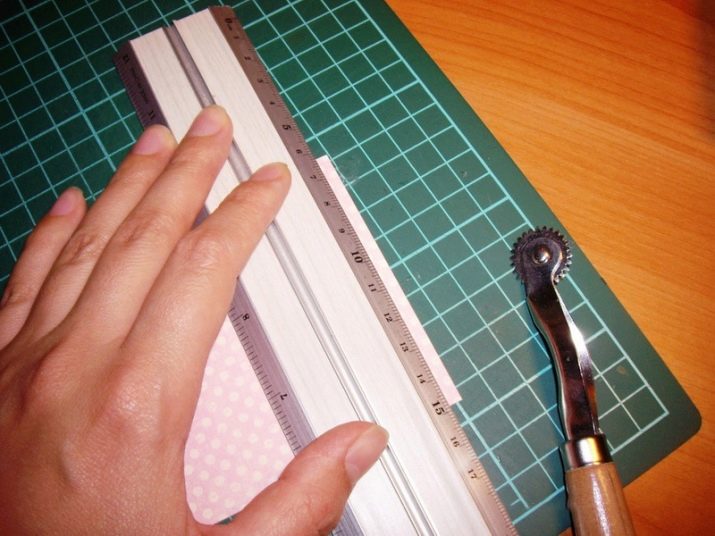
- Hole puncher. An ordinary stationery punch is used to connect parts, sheets in scrapbooking. The corner punch is the most convenient to use. Differs in compact size with one working side. Border - creates an openwork edge on the paper.
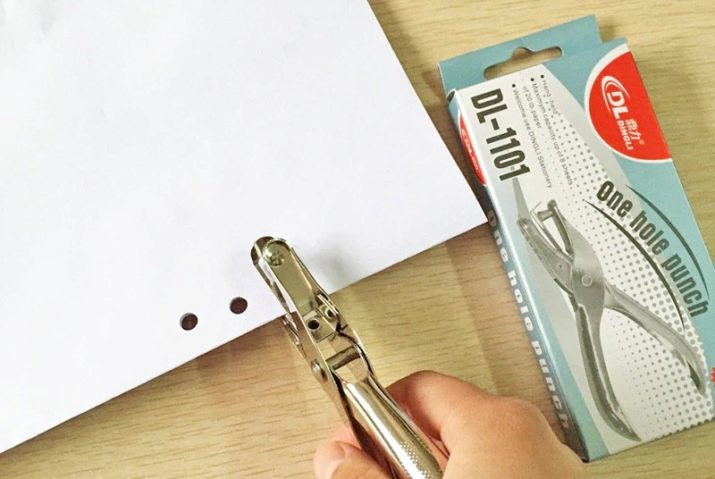
- Figured hole punch for photos. The tool blade is shaped in a variety of shapes: flower, star, square, and so on.

- Tweezers. Allows small parts to be neatly placed on the adhesive backing.
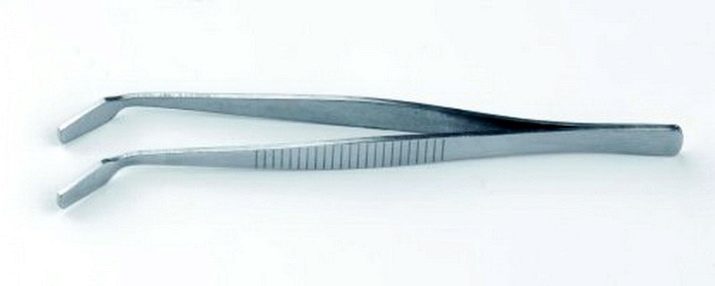
Additional tools to make your work easier and expand the methods of album decoration. They are mainly used by professional craftsmen.
- Eyelets. Metal rings that surround a round cut on paper, cardboard and other materials. In scrapbooking, they are necessary to protect holes made by a hole punch, decorate parts, fasteners for laces, ribbons, threads.
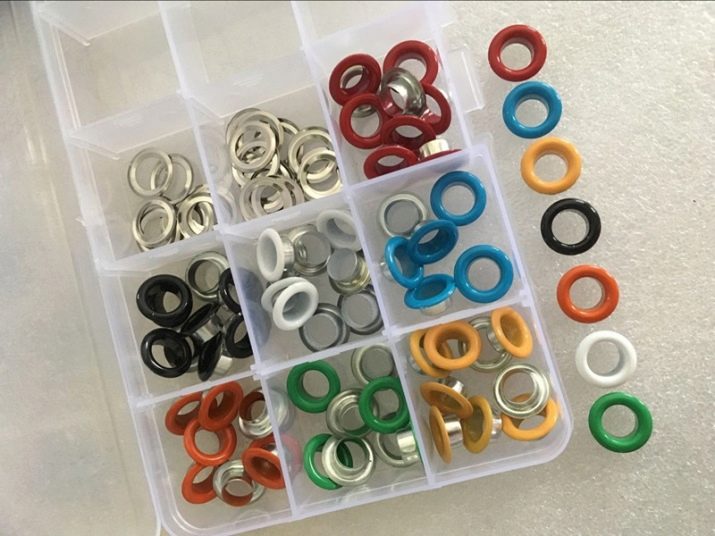
- Cropodile - a tool for creating a hole and simultaneously inserting an eyelet. The professional device allows you to work with material of different density.
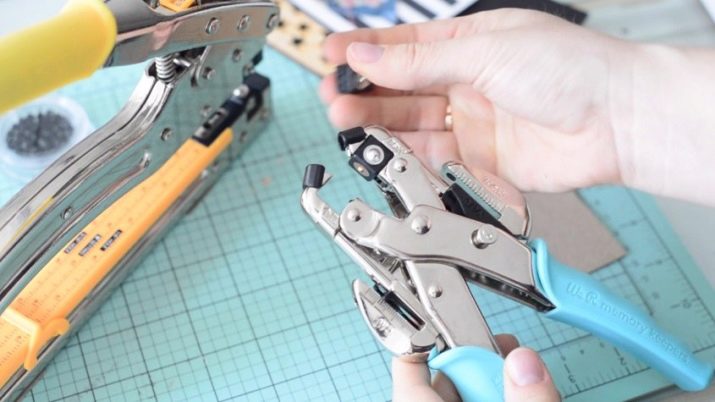
- Cutting machine. Allows you to cut a selected workpiece on complex materials (fabric, foil).

- Sewing machine. It is used as a tool that holds parts together with threads; when creating a binding or decor, decorating a product with a zigzag or other stitch.
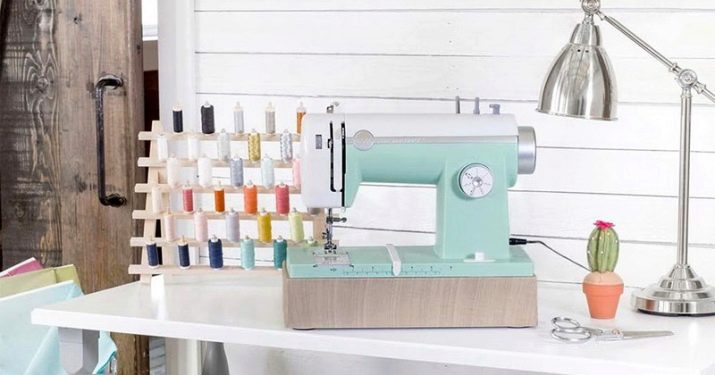
- Manual printer. Creates conceived inscriptions, ornaments, drawings, texts on paper or cardboard. The symbols are extruded onto adhesive tape.
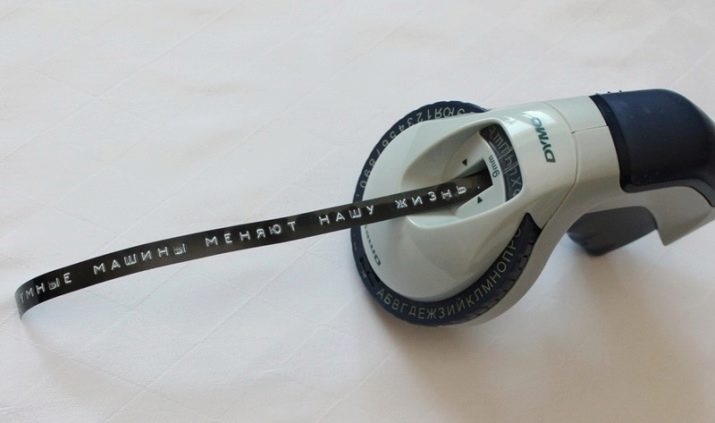
- Brads. Decorative buttons in various styles. They allow you to connect parts with the possibility of their sliding, are used as decorations.
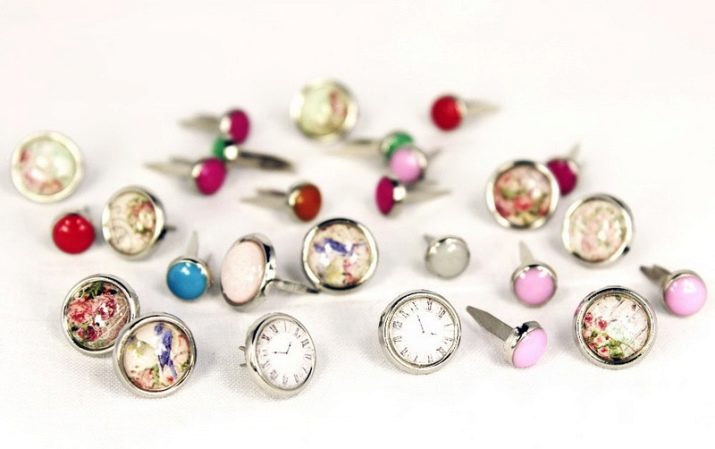
- Plotter. It can work as a printer for printing various texts, images on paper from A4 to A0 in size, and as a shredder.
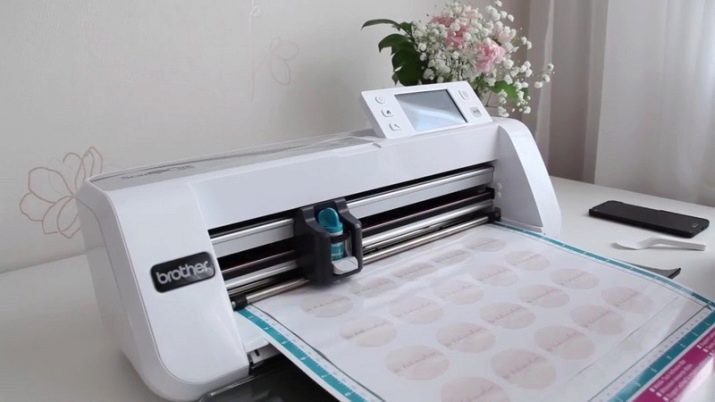
Necessary materials
Scrapbooking requires permanent materials that are sold ready-made as kits or purchased by the piece. Scrapers store things in transparent pull-out boxes to easily find the item you want. The paper should be hidden in folders, while maintaining the quality and color of the sheets.
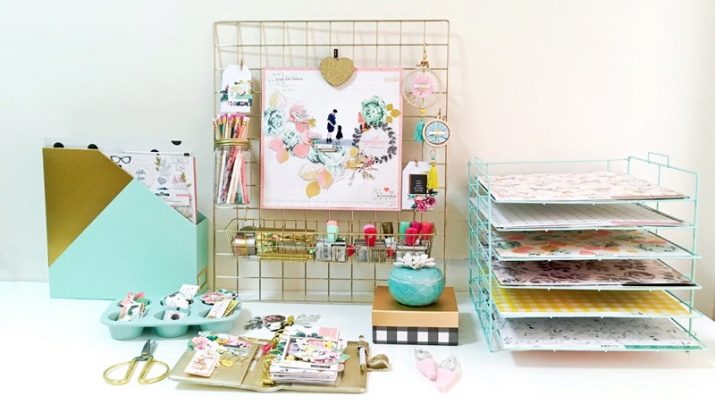
Despite the fact that scrapbooking paper has a high density, wet colored sheets should be laid out separately, otherwise the pattern will "transfer" to both sides of the stuck together paper.
Album
Acts as a storage place for paper pages. The standard size of the album varies from 15x15 cm to 30x30 cm. Blanks are sold in specialized hobby stores or are made independently from dense materials. The fastening tool in the album is different: rings, bolts, bands, spring, binding. How exactly the pages in the album will be attached is up to the scraper.
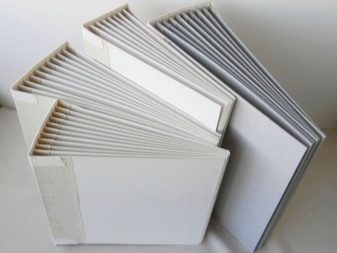
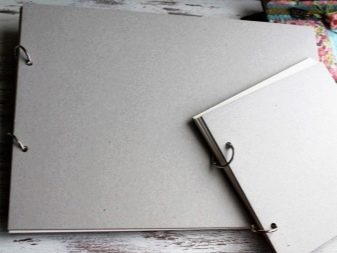
Cardstock
Or thick cardboard. Divided into smooth, textured and solid colors. In scrapbooking stores, it is presented in a wide range: various geometric patterns, paintings, in the form of frames, and so on.
In the creation of an album, cardstock acts as a substrate for decorated paper, maintains a balance of color combinations, and allows products to be superimposed on it not to deform.
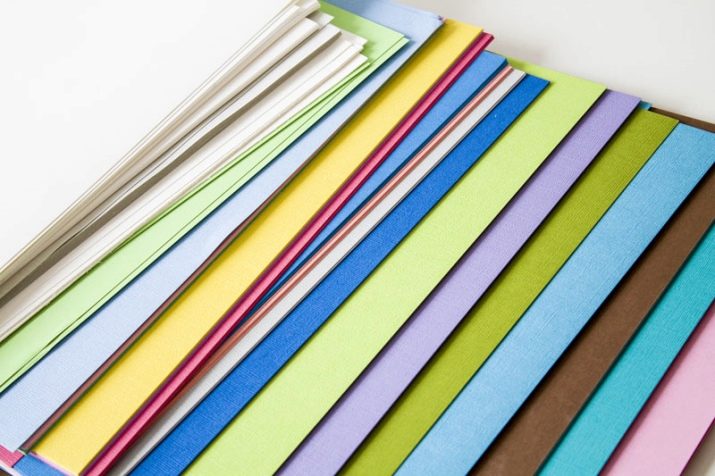
Thick design paper
The density of this paper is lower than that of cardstock, but higher than that of regular A4 sheet. It happens one - and two-sided.It is used to add color, maintain the theme of the album, create the dynamics of objects. If you plan to store the album for a long time, it is recommended to purchase acid-free paper. It is used as the main background in its entirety (the material is taken in muted colors and with a calm pattern) or in fragments, complemented by ribbons, stickers, sequins and other art materials.

Design papers are sold individually and in sets, making it easy to collect thematic sheets.
Glue
Allows you to reliably fix the paper sheet and other materials with each other, connecting them to the basis of the album. The glue is presented in the form of double-sided tape, scotch tape, liquid glue, glue stick. For scrapbooking, the adhesive should be acid-free, non-toxic, odorless.
During work, the glue is not distributed over the entire surface of the fragment, but along the corners or several sides. A large amount of glue will lead to a loss of decorative effect of the fragment, due to its flowing out and hardening on the background page, deformation of the paper (it forms waves in the places of gluing). Large, heavy parts may require the use of super glue.
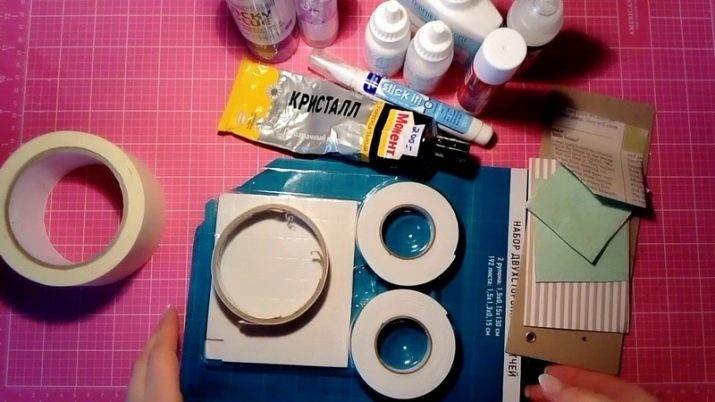
Decor
The choice of decorative ornaments for scrapbooking is endless. The decor is used purchased and made independently.
Most Popular Items:
- beads and beads;
- rhinestones;
- badges;
- textile;
- chains;
- polymer clay products;
- frames, mirrors;
- napkins;
- figures made of felt, plastic;
- buttons;
- imitation of precious stones;
- lace;
- corrugated, gilded and other paper;
- shiny powders;
- rubbing;
- coins;
- chipboards - shaped cardboard blanks covered with paint or paper.
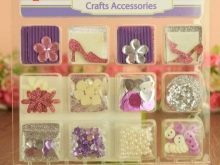
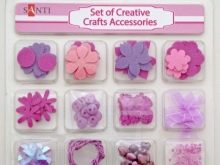
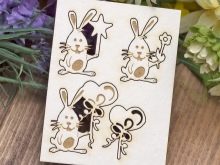
You can endlessly list the decor. Let's take a closer look at several design elements.
Rubbing
Presented in the form of a film glued to a transparent surface. Unlike stickers, rubbing is applied to the sheet in a thin layer. Varieties: patterns, drawings, inscriptions, ornaments.
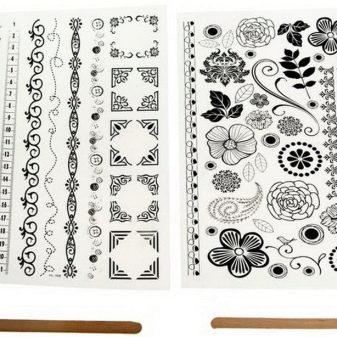
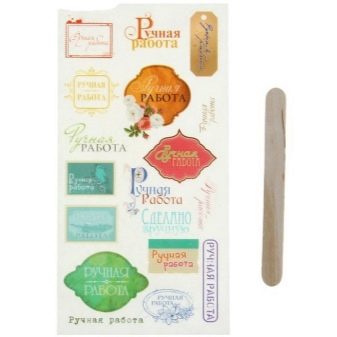
Application technique.
- If the rubbing is represented by separate elements on the sheet, one should cut out a suitable fragment one by one and remove the protective film from it.
- Attach the finished material to a suitable area on the paper, press down, smooth with a stick the places of the film on which there is no drawing. The stick can be included in the kit.
- Make sure that the drawing is printed on paper - the image transferred to the sheet will be barely visible on the film.
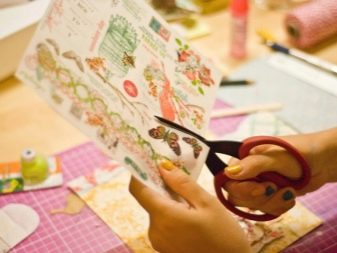
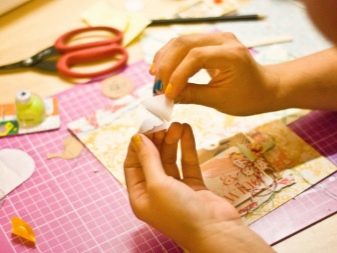
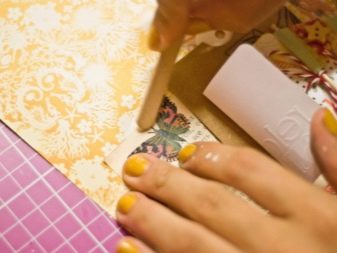
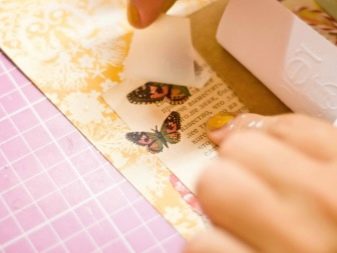
There are, in addition to simple, textural, flock polishes. The former are characterized by a double-sided sticky side. On the outside, as a rule, glitter or velvet sand is sprayed. Flock - have a velvet side, are distinguished by high density and difficulty in application.
Stamps
Stamping can be considered a basic scrapbooking technique. To create a stamp, you will need ink, a stamp pad, a stamp.
Finished stamps are made of rubber or photopolymer. Rubber products are more expensive, but they are highly durable. It is worth buying a large set of stamps if scrapbooking brings a large number of orders; in other cases, stamps can be made independently or photopolymer tools can be purchased.
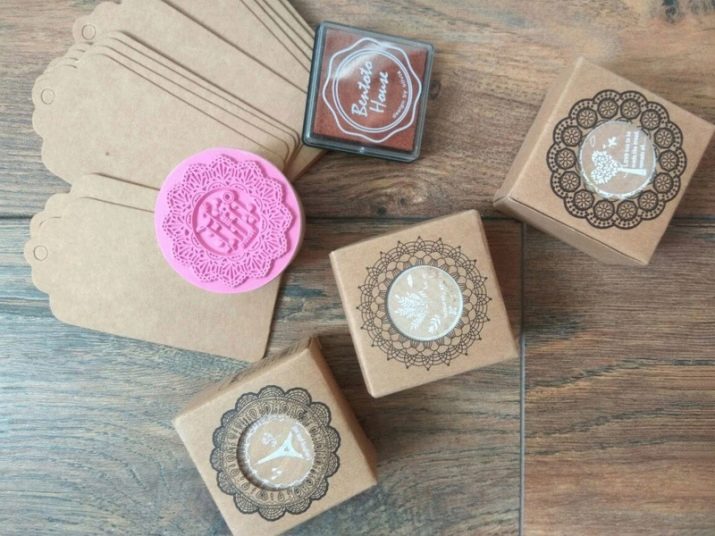
Cabochons
In scrapbooking, cabochons are decorative products of a round, oval or square shape, with a convex outer side, the flat base of which is made in the form of various patterns, paintings, vegetation, or completely transparent. Cabochons imitate stones, cameos, inserted into jewelry. They are used to decorate pages, envelopes, photographs, decorative elements, with an emphasis on the special details of the album.
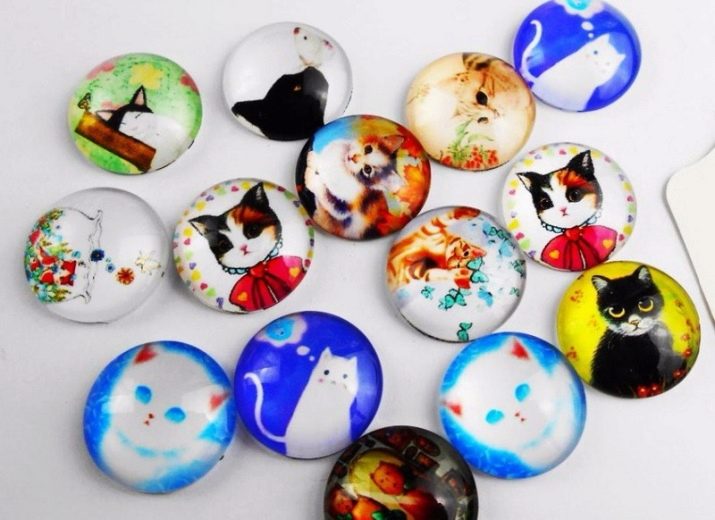
They are fixed to paper with glue or adhesive tape. Sold in sets.
Artificial flowers, feathers
Flowers are made of paper, fabric, have a corrugated and other shape with a flat base, which facilitates the process of fixing the element.The material is presented in various colors, some items are covered with glitter. Sold individually and in sets, size range from 1 to 10 cm.
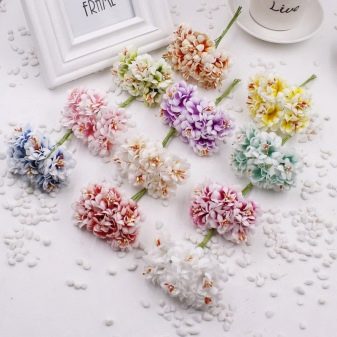
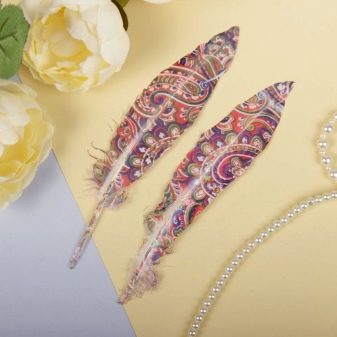
Scrapbooking feathers are rarely used due to the fragility of the material, but they create an incredible effect. Feathers are mainly represented by chicken fluff, dyed in various shades, or taken from other birds. Sold in sets of 10 or per piece.
Ribbons
They are widely used in the creation and decoration of the album. Satin, lace, texture, fabric, paper, shiny, velvet and so on are used. Borders, decorative elements are laid out from ribbons, bookmarks and loops are created.

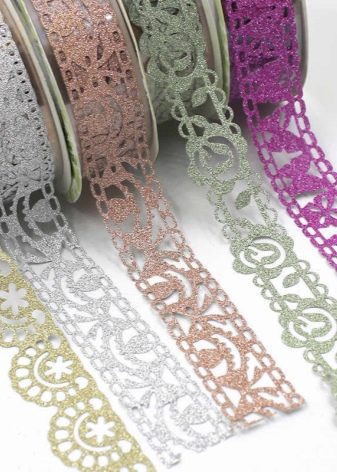
Textile
The first and last pages of the album are upholstered with cotton, satin and velvet fabrics. When placed under the material of cotton wool, holofiber, a volumetric cover is created, expanding the possibilities of decoration. Pieces of fabric, patchwork, are used to create decorative elements of the page, bookmarks, upholstery of chipboards.
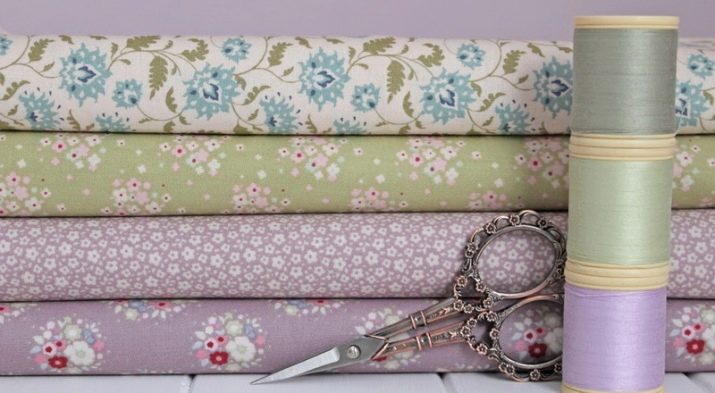
Die cut
Figures made of thick cardboard, wood, felt. Made in various styles and directions. Sold in the form of A4 sheet, in which the elements are carved. Die cuts are made of paper in the form of plates with text, journaling. From dense materials - letters, keys, curls and so on. All elements can be covered with paint, patterns, glitters or completely be monochromatic, clean.
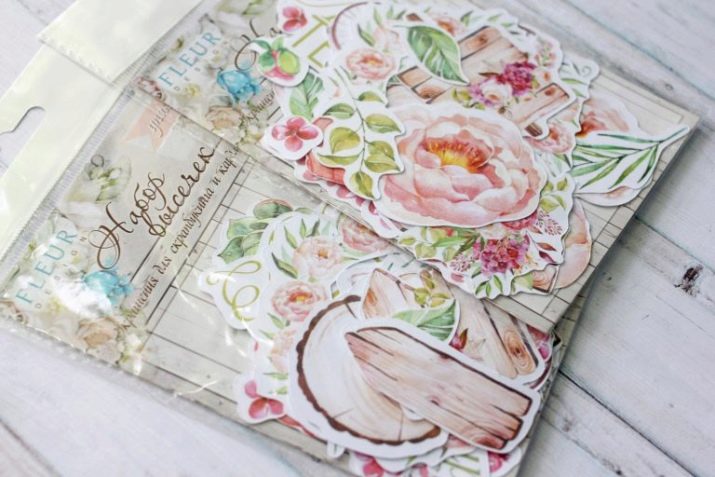
How to choose a set?
For beginner scrapers, ready-made kits are suitable, consisting of paper, an album, holders and decor. Such kits are sold in specialized hobby stores or on the "Everything for scrapbooking" sites.
The sets are divided into two types: paper (for scrap-work) and full-fledged (including decorations, stickers, all elements of the set are selected in the same style).
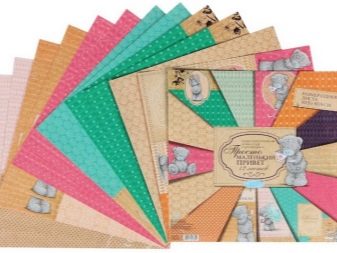
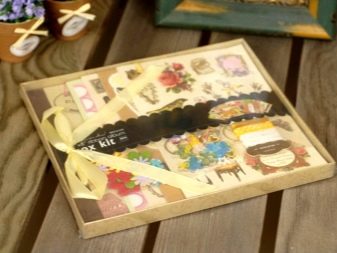
To create the first album, you should give preference to a set of paper or assemble it yourself from piece sheets, complementing it with the selected decor elements. The price of a self-assembled album is sometimes lower than buying a ready-made set.
Helpful hints
After purchasing everything you need, the question arises - how to use it and how to create an album?
To begin with, it is worth deciding on the concept of the album, its theme. Further, choose the main accents — do not take more than three elements - and think over their placement on the pages.
The most common mistake is overloaded composition, using a lot of details. The use of beautiful decor in large volumes makes the work tasteless, does not allow the eye to "catch" on the details. Therefore, at the initial stages, it is recommended that the album sheets be made in the same style and color scheme, with the gradual addition of other styles.
Looks good a series of stylistic directions every three pages.
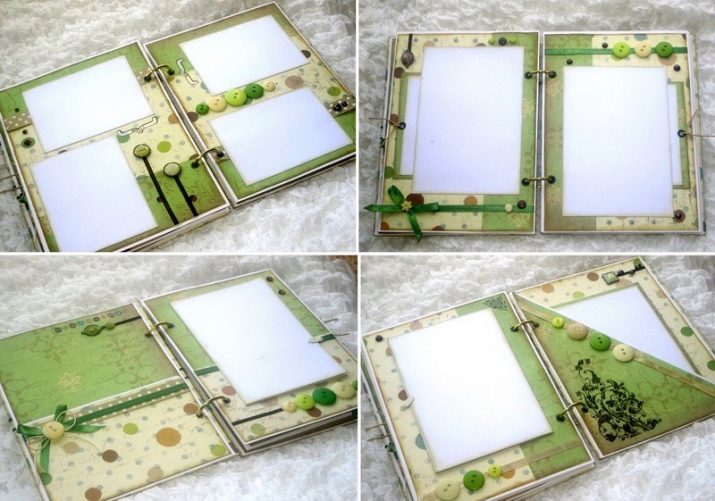
Fundamental rules
- Photos with a lot of small details need to be set up against a solid background of muted shades.
- The color of the substrate should match the prevailing hue in the photo.
- The picture frame should not draw attention to itself.
- The use of additional elements on the page - patterns, beads and others - involves the use of plain paper.
- Photos are not placed close to each other - two images are enough on one page.
- Choose one design technique: stamping or distressing. You shouldn't try to combine all the methods in one album.
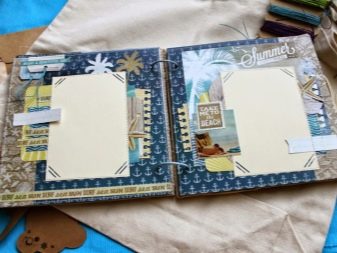
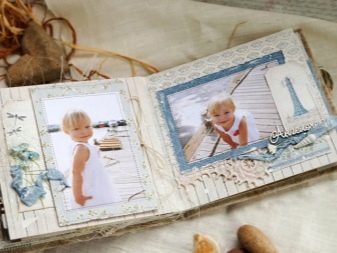
For information on what a beginner needs for scrapbooking, see the next video.








